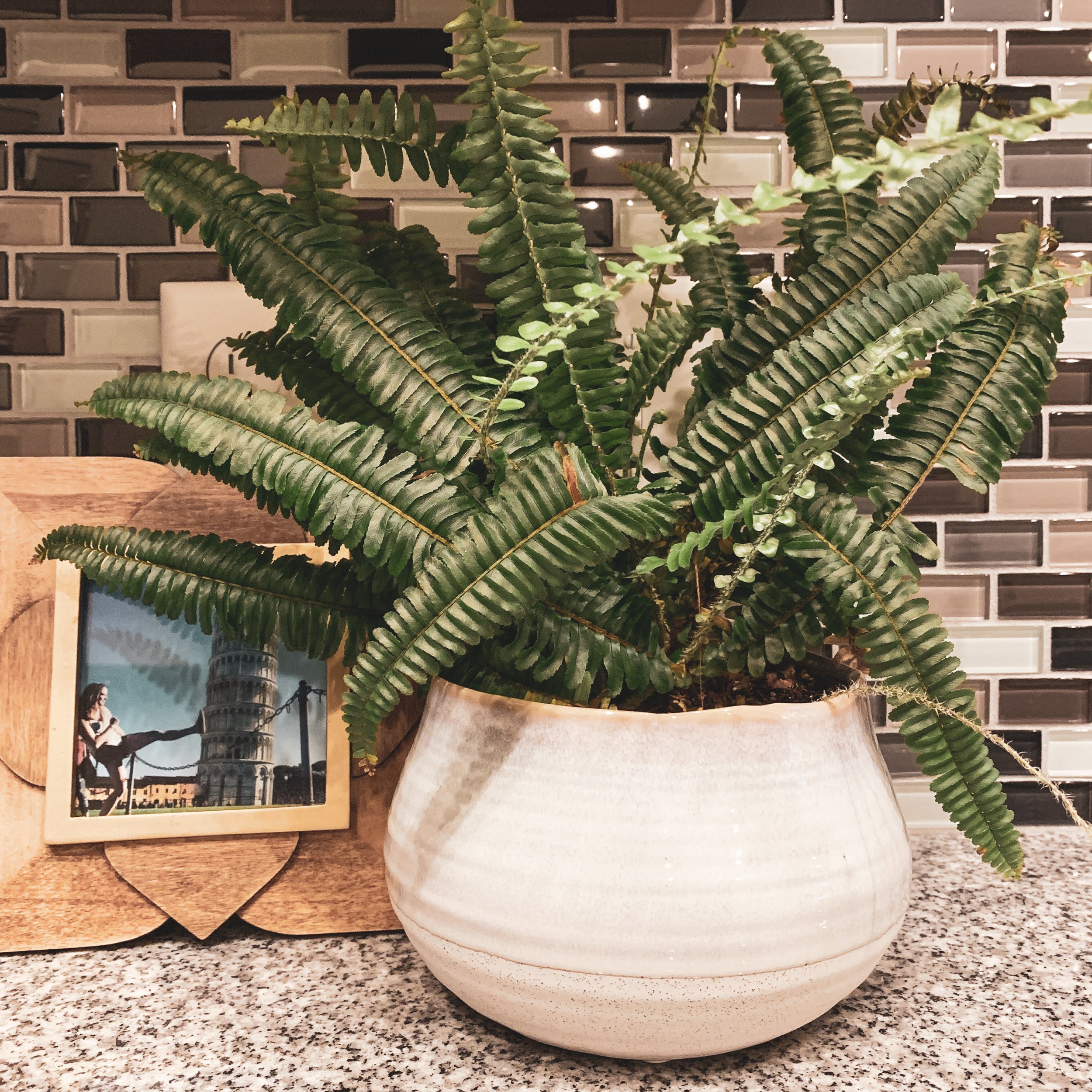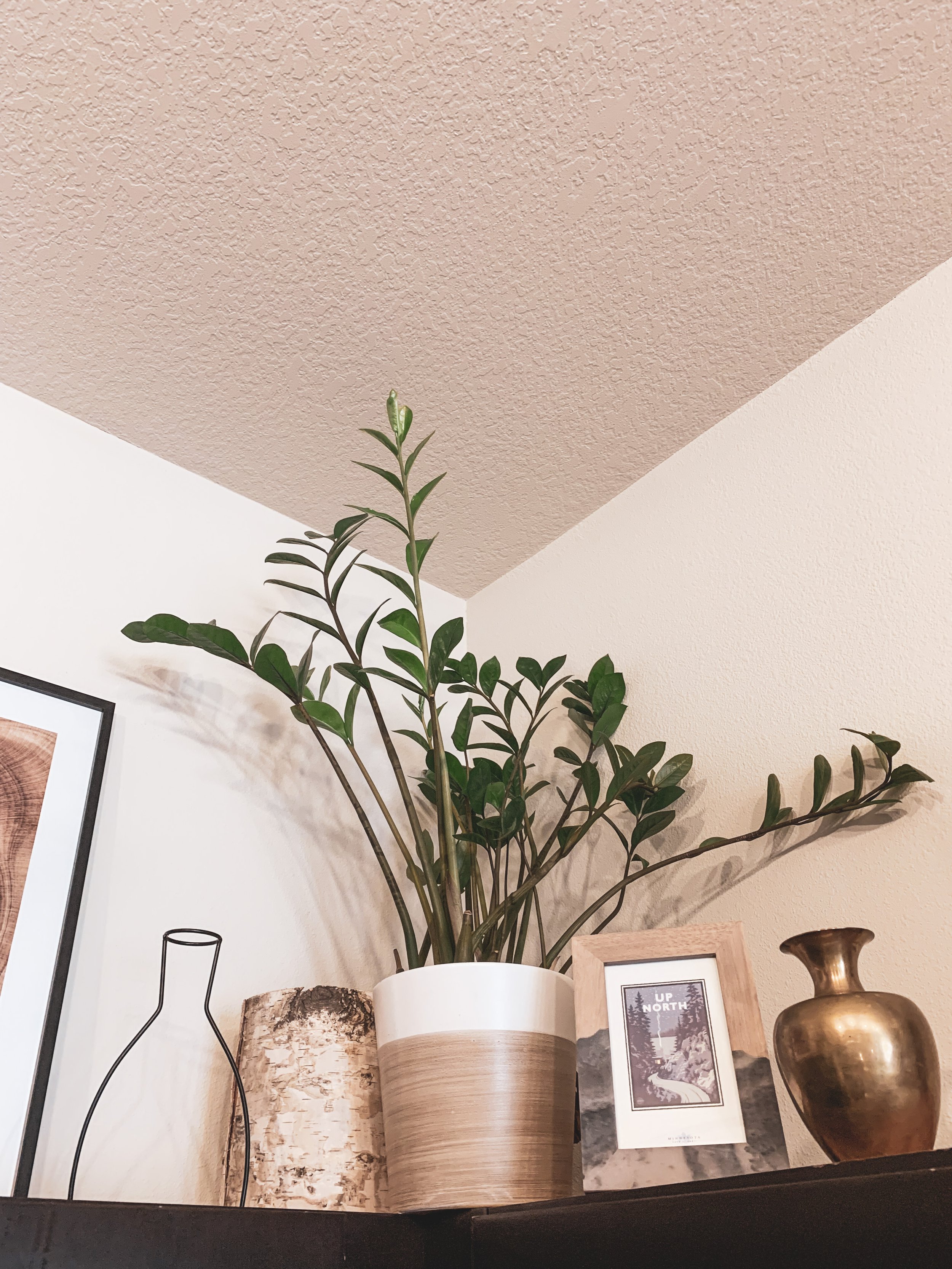Aren’t Fake Plants Good Enough?
Artificial plants can be great from an aesthetics standpoint. They are lovely fillers for empty shelves, and their natural forms remind us of nature. But no, they are no substitute for the real thing. Here’s why:
First I’d like to mention that I have both real and fake plants in my home - 17 of them are living, and 5 are artificial. Yes, that’s a lot for an 800 sq. ft. apartment. I REALLY like plants, okay?
Artificial plants have their benefits from a practical perspective. Fake plants can be placed in spaces with no natural light, they can be rotated out easily as you switch up décor, little ones can’t get into them, and they require only dusting for upkeep. From a biophilic perspective, the natural shapes and colors reminiscent of the real thing can be appealing.
But here’s what you miss out on when you opt for the artificial route.
Among the extensive list of benefits, real plants produce oxygen, eat up to 20% of our dust, increase humidity, and otherwise purify the air. The effort we take to maintain them pays off handsomely in new growth, which is rewarding, helps combat depression and anxiety, increases our capacity for compassion and empathy, and teaches us patience. It literally brings life into our home.
Most importantly, though: We can tell the difference!
Sally Coulthard writes in the book, Biophilia: You + Nature + Home, “In a study that tested how well people could tell between photographs of real and fake fruit, subjects were able to correctly differentiate between remarkably similar images. Even photographs of real and fake fruit that were almost identical in terms of color, contrast, and spatial attributes could be separated into genuine and artificial. The study couldn’t establish exactly how the subjects could tell fake from real, but clearly there were some very subtle, intuitive decisions being made.”
Can you tell which pictures above have real plants and which are fake?
Why does it matter if we know it’s fake? After thousands of years working with, consuming, and living among nature, humans became highly adept at recognizing natural materials for what they are, and can tell when we’re being duped. Therefore, it makes sense that, when we are presented with natural-like yet artificial objects, our emotional reaction to them is reflective of this understanding - we know we’re dealing with an imitation, and the pleasure we receive is somewhat hollow compared to the real thing.
A example of this is the difference between viewing an image of people hugging and experiencing an actual hug. We hang images like the drawing shown here in our homes, and, don’t get me wrong, artwork like this can promote feelings of compassion, love, and healing in relationships. We want that! It can even be a motivator for us to go out in search for the real thing - that’s great! But it could never be a replacement for it. Given the choice between looking at an image of a kind hug or receiving a kind hug IRL, I think it’s safe to say that the vast majority if not all of us would rather receive the kind hug. The image in itself is not ‘good enough.’ This is how it works, in its own way, with nature. The reminder of a plant can be beautiful, comforting, and attractive, but it can only be that - a reminder.
Some of us, though, don’t currently have someone readily accessible to give us kind, warm hugs. Some of us don’t live in plant-allowing environments or otherwise cannot keep living plants in their home. If this is the case for you, the reminders are better than nothing, for now.
The problem is that we spend 87% of our time indoors, on average. Rather than being surrounded by the sunlight, breezy air, and rustling leaves we evolved among, we spend almost all our time removed from our natural environment. We don’t see, feel, or hear the same things we are biologically programmed to respond to. Like animals in a zoo, removed from their natural habitat, this mismatch contributes to stress, depression, and anxiety. This is the basis for the biophilia hypothesis; we must work to integrate the natural and built environments to ease stress and illness, as well as to promote wellbeing.
Living houseplants contribute to a biophilic environment by bringing nature indoors. Our ultra-honed spidey-senses confirm them as the real deal, and our stress is eased as our biology acknowledges pieces of the natural environment around us. At our deepest, most primal levels, we feel more at home. Do you see how artificial plants only take us halfway there?
Regardless of whether you have living plants at home or not, we all would benefit from more time spent outside in nature. But especially for those who haven’t invited nature in their homes just yet, make an extra effort to ease your stress by participating in real life nature in your own ways, whether hiking, gardening, bird watching, etc.
If you’re hearing what I’m saying, but are discouraged by your inability to be a plant whisperer, I recommend trying these 3 virtually indestructible plants. I recommend these over any other succulents or cacti, because while those are also hardy, they lean toward the high light and low water treatments to survive, while I have all 3 growing at home over many years with extreme variations of sunlight, water, and attention. So however you tend or not tend to treat your plants, these are your most forgiving. I will also mention that while I absolutely adore my plants, I really don’t do anything ‘special’ for them. My fig doesn’t take showers, many of my pots don’t have drainage holes, and I drop fertilizer indiscriminately and only when it occurs to me. So I’m not some great plant mom, and still my babies grow! The same can be true for you!
ZZ Plant (zamioculcas zamiifolia): grows well in low light, keeps reserves of water in ‘bulbs’ at the base of its stems, and is very resistant to disease and insects. I keep this guy in a rarely visited (by both me and the sun) corner above my kitchen shelves, and I wouldn’t trust any other plant for the job.
Snake Plant (Sansevieria trifasciata): I’ve split the same plant into 4 pots due to growth since 2014! 2 of them are at the back of my apartment, 1 directly shaded by my kitchen island, and they do fine. 2 others are closer to my window and will NOT stop growing! Over the years I’ve varied from (over) watering daily to less than once a week.
Lucky Bamboo (Dracaena sanderiana): This is the pot and pebbles I bought it in. It grows simply from standing water, which I refill mmmaybe once a week(?). I could definitely be more consistent with this one, but I’m not. It would also be good to rinse out to keep any mold from growing, but I honestly haven’t done that more than a couple times since I got it in 2019.








